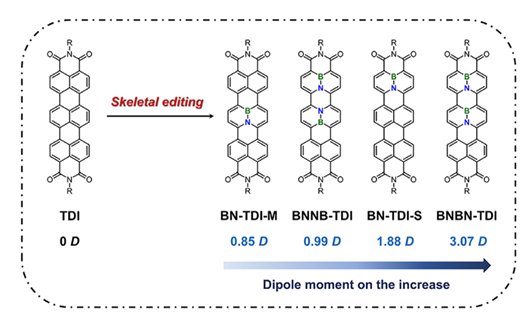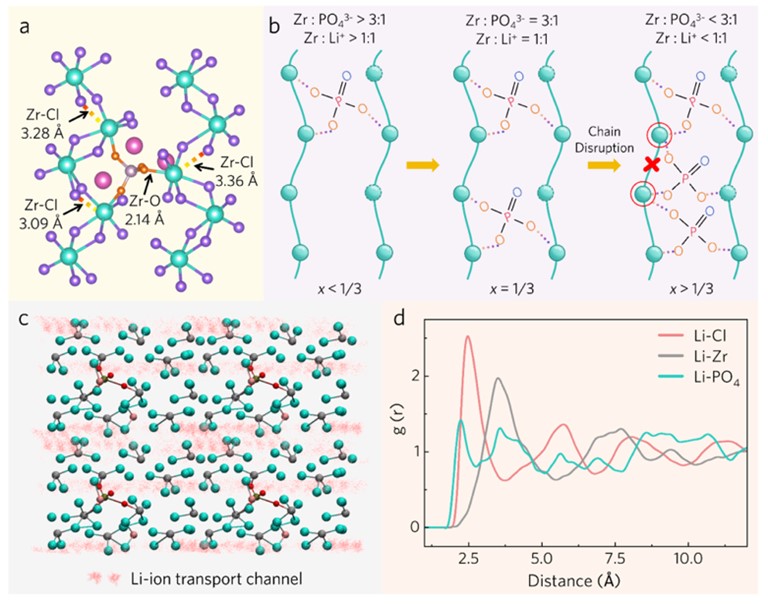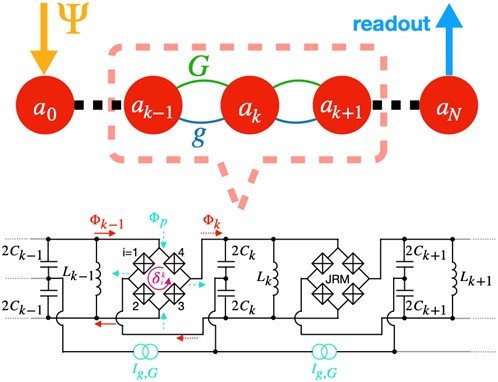Peking University, June 04, 2025: Cutting-edge discoveries from PKU scientists are redefining frontiers in cancer theranostics, energy storage, and cosmic exploration.
1.
B-N-Embedded Terrylene Diimides (BN-TDIs): A Modular Synthetic Approach
Terrylene diimides (TDIs) are key dyes in cancer theranostics and optoelectronics. While traditional modifications focus on side chains, a research team led by Pei Jian and Wang Jieyu from College of Chemistry and Molecular Engineering, Peking University, embedded B-N units into the TDI core, enabling tunable optoelectronic properties. Published in Angewandte Chemie International Edition, their work shows BN-TDIs exhibit enhanced electron mobility (0.03 cm² V⁻¹ s⁻¹) and near-IR fluorescence (>900 nm), with shorter carbonyl-π distances (3.19 Å) enabling stronger intermolecular interactions.
Read more: https://onlinelibrary.wiley.com/doi/10.1002/anie.202503571
Figure.1 Manipulation of dipole moments of BN-TDIs via “skeletal editing”.
2.
Controlled Polymerization via Glassy Chloride Electrolytes for Advanced Materials
All-solid-state lithium batteries need electrolytes with high conductivity, stability, and dendrite suppression. Polymer electrolytes (e.g., PEO) have slow ion transport, while crystalline electrolytes face poor electrode contact. The Pan Feng team from School of Advanced Materials, Shenzhen Graduate School, Peking University, created glassy chloride electrolytes using a ZrCl₄ matrix to dissociate lithium salts (e.g., LiCl, Li₂SO₄, Li₃PO₄). Characterized by DSC, PDF, ssNMR, and FIB-TEM, these show polymer-like Li⁺ transport and high transference (~1). The 1/3Li₃PO₄@ZrCl₄ electrolyte achieves 1.2 mS/cm conductivity, wide stability, and supports stable cycling in LiNi₀.₈Mn₀.₁Co₀.₁O₂||Li-In batteries. The related research findings were published in Advanced Energy Materials.
Read more: https://advanced.onlinelibrary.wiley.com/doi/abs/10.1002/aenm.202500913
Figure.2 Salt dissociation mechanism and Li-ion transport in 1D ZrCl₄-Based Matrices.
3.
Gut Microbiota and Piezo2 in IBS-D
A study led by Duan Liping at Peking University Third Hospital explored how gut microbiota dysbiosis regulates the mechanosensitive molecule Piezo2 in diarrhea-predominant irritable bowel syndrome (IBS-D). Through fecal microbiota transplantation, 16S rRNA sequencing, and Piezo2 knockdown experiments in mice, researchers identified Fusobacterium varium as a key bacterium that upregulates Piezo2 expression. The study further revealed that microbiota-derived metabolites indole-3-acetic acid and indole-3-acrylic acid directly interact with Piezo2 to regulate its function. Published in Gut Microbes, these findings establish Piezo2 as a potential therapeutic target and provide new insights into microbiota-nervous system interactions in IBS-D pathogenesis.
Read more: https://pubmed.ncbi.nlm.nih.gov/40296251/
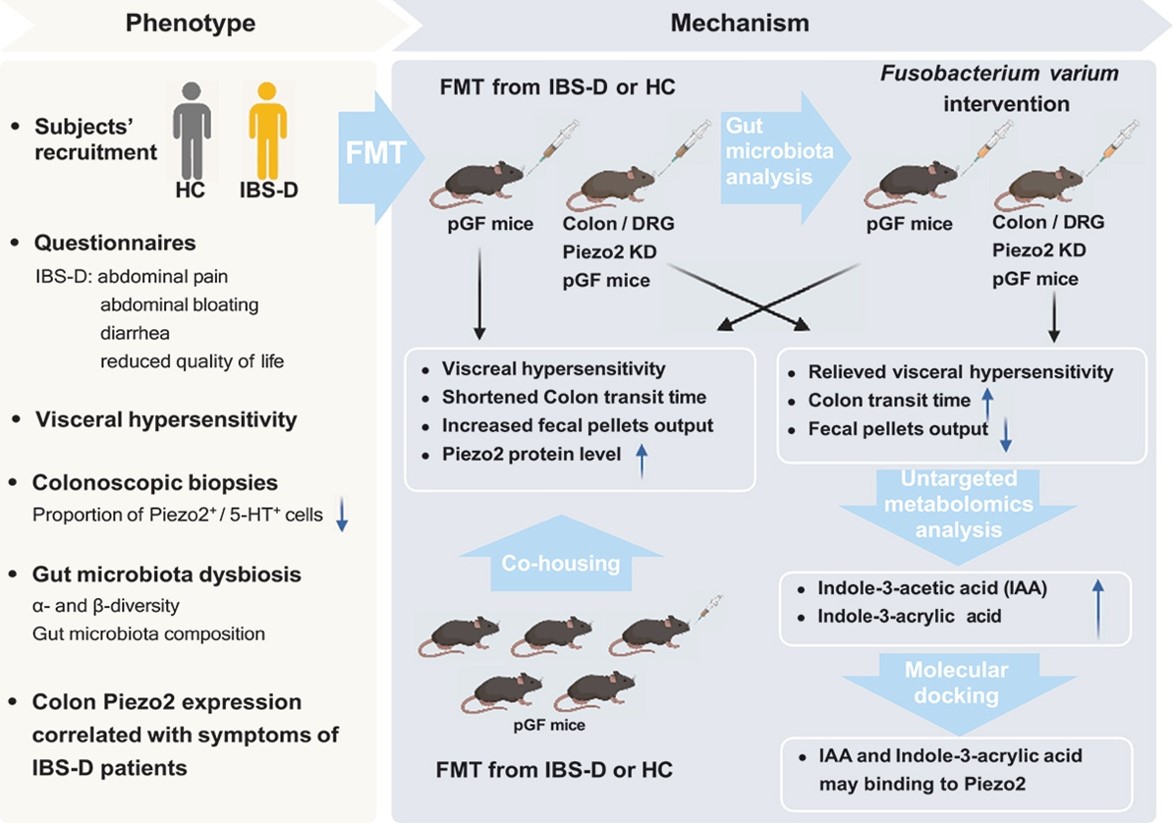
Figure.3 Research design and key findings.
4.
Histone Lactylation for Anti-Aging and Potential Cancer Applications
Professors Tao Wei’s team from School of Life Sciences, Peking University, discovered histone lactylation's crucial role in aging. Their study in Advanced Science shows lactylation declines with age due to reduced glycolysis, accelerating senescence. Restoring lactylation delays aging by maintaining DNA repair and cell cycle genes. They demonstrated that exercise could boost lactylation, counteracting muscle aging. This work establishes lactylation as both a biomarker and therapeutic target for aging interventions, bridging metabolism and epigenetics in aging research.
Read more: https://advanced.onlinelibrary.wiley.com/doi/10.1002/advs.202412747
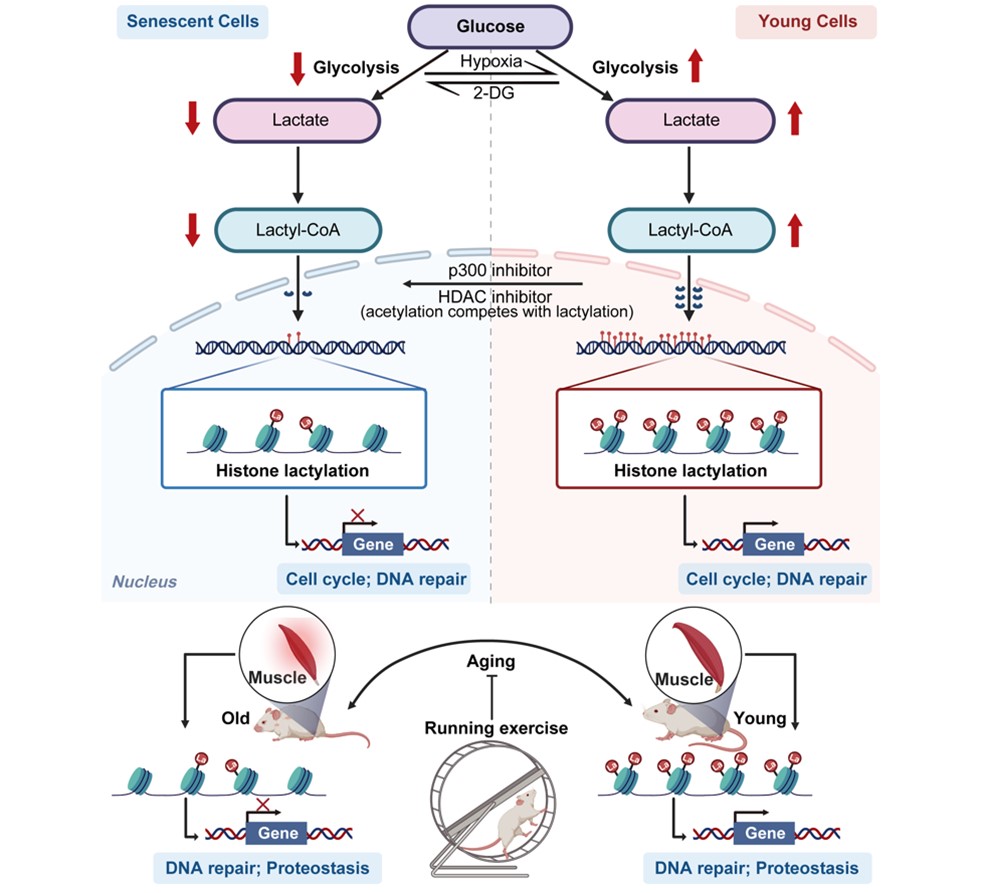
Figure.4 Histone lactylation modification delays cellular senescence and skeletal muscle aging by regulating aging-related pathways.
5.
Multi-Mode Quantum Detector for Dark Matter and Gravitational Waves
Professor Jing Shu's team from School of Physics, Peking University, developed a novel detector combining resonance enhancement and broadband response using quantum-coupled superconducting circuits. Published in Reports on Progress in Physics, their "multi-mode quantum limit" framework overcomes fundamental sensitivity barriers in searching for axions, dark photons, and high-frequency gravitational waves. This advancement directly informs next-generation experiments like SHANHE and HAYSTAC, significantly improving prospects for detecting elusive cosmic phenomena through innovative quantum engineering solutions.
Read more: https://iopscience.iop.org/article/10.1088/1361-6633/add050/pdf
Figure.5 Implementation of multi-mode coupling in resonant cavity or superconducting circuit detectors using superconducting Josephfson junctions.
Written by: Akaash Babar
Edited by: Chen Shizhuo
